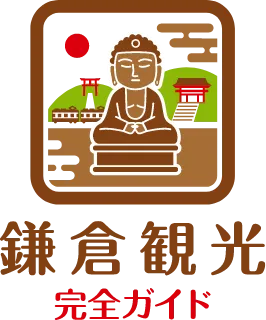Autumn Leaves at Hase-dera Temple (長谷寺)
Discover the Autumn Leaves at Hase-dera Temple (長谷寺)
Hase-dera Temple is one of Kamakura’s most captivating autumn spots. From late November to early December, the temple grounds glow in fiery shades of red and gold. The highlight is the evening light-up, transforming the maple and ginkgo leaves into a dreamlike scene that leaves lasting impressions.
Arrive before sunset to enjoy the transition from daylight to a magical night view. The illuminated grounds, combined with the temple’s serene atmosphere, create a romantic setting—perfect for couples or anyone seeking a unique seasonal moment.
When Is the Best Time to Visit?
The autumn foliage usually peaks from late November to early December. However, the exact timing varies by year, so checking the official Hase-dera website before visiting is recommended. Expect heavy crowds during weekends and early evening hours, while weekday mornings and opening times offer a quieter, more relaxed experience.
Photo Highlights and Must-See Spots
Within the temple grounds, numerous photo-worthy spots await. Myochi Pond and Hojo Pond reflect the surrounding maple leaves, creating the famed “upside-down autumn view.” Along the stone steps, maple branches form colorful arches overhead, glowing beautifully under the lights.
Further uphill, the Kannon Hall shines with blue illumination, giving a mystical atmosphere. From the observation deck, you can overlook Kamakura city and Yuigahama Beach, framed by autumn colors. Don’t miss the beloved Nagomi Jizo and Ryoen Jizo statues, surrounded by autumn leaves—perfect for a memorable shot.
Embrace the Quiet Hours of Morning
If you wish to enjoy the foliage in peace, timing is key. Visiting early in the morning or late in the evening after the main crowd disperses allows for a calmer experience.
Guests staying at Tosh’s Place (トシズプレイス) can easily take advantage of free time before or after breakfast to visit the temple right after it opens. The solemn Kannon Hall, the turning of the Wheel Sutra in the Kyodo hall, and encounters with unique Buddhist statues add a spiritual touch. Limited seasonal goshuin (temple stamps) also make for a special cultural keepsake.
How to Get There from Tosh’s Place
Hase-dera Temple is conveniently located with easy access from central Kamakura, making it an ideal stop during a stay at Tosh’s Place. With a self-catering style, guests can plan meals flexibly and enjoy the night illumination after a day of sightseeing.
Since entry is possible until 7 PM, you can casually visit after afternoon activities, or head out in the morning before the crowds. Staying nearby allows you to explore at your own pace, free from rigid schedules.
Wrap-Up: Autumn Leaves and a Local Way to Experience Kamakura
The autumn foliage at Hase-dera Temple offers a seasonal harmony of nature and history unique to Kamakura. The contrast between day and night views ensures fresh impressions with each visit.
From glowing Kannon Hall to maple reflections on the ponds, the temple is filled with moments worth capturing. Staying at Tosh’s Place makes it easy to choose your timing and add breathing space to your journey. This autumn, discover the beauty of Kamakura’s “flower temple” at your own rhythm.
Toshi’s Rating (2025)
| Evaluation Point | Score | Reason |
|---|---|---|
| Scenery | 10 | The pond, traditional temple buildings, and vivid autumn colors create an iconic view. Night illuminations add a magical touch, and the site is famed for its photogenic appeal. |
| Accessibility | 10 | From Hase Station on the Enoden line or the “Hase Kannon-mae” bus stop, it takes less than five minutes on foot. Clear signage and easy navigation. |
| History | 10 | Founded in 736, Hasedera is one of Kamakura’s most famous temples, with a nationally important Kannon statue and deep historical significance. |
| Comfort/Crowding | 8 | The temple gets very crowded during autumn but the grounds are spacious and facilities (benches, toilets) are well maintained. Still, crowds in peak season can impact comfort. |
| Online Reviews | 9 | Google Maps averages are around 4.6, with many visitors highlighting the views and atmosphere. Some note the crowds as a downside. |
Total Score: 47
Hasedera’s autumn colors offer some of Kamakura’s most impressive and accessible scenery, enhanced by historical depth. Popularity can mean crowds, but overall the experience is exceptional, making it highly recommended for inbound travelers.
